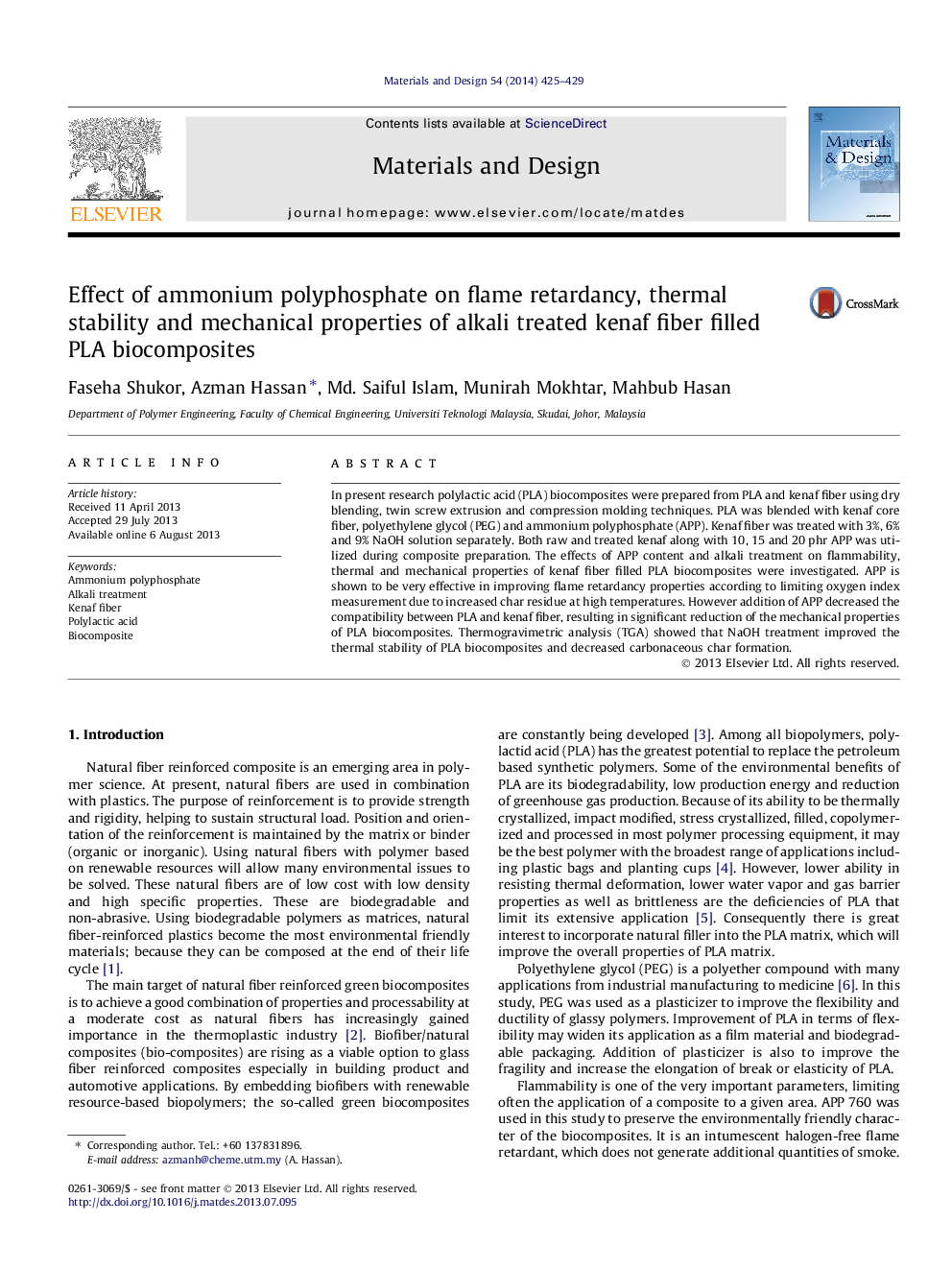| Article ID | Journal | Published Year | Pages | File Type |
|---|---|---|---|---|
| 829656 | Materials & Design (1980-2015) | 2014 | 5 Pages |
•PLA/kenaf biocomposites were prepared using extrusion and compression molding.•APP increased flame retardancy and thermal properties of biocomposites.•APP decreased compatibility between the PLA and kenaf fiber.•Alkali treatment improved thermal stability and decreased char formation.
In present research polylactic acid (PLA) biocomposites were prepared from PLA and kenaf fiber using dry blending, twin screw extrusion and compression molding techniques. PLA was blended with kenaf core fiber, polyethylene glycol (PEG) and ammonium polyphosphate (APP). Kenaf fiber was treated with 3%, 6% and 9% NaOH solution separately. Both raw and treated kenaf along with 10, 15 and 20 phr APP was utilized during composite preparation. The effects of APP content and alkali treatment on flammability, thermal and mechanical properties of kenaf fiber filled PLA biocomposites were investigated. APP is shown to be very effective in improving flame retardancy properties according to limiting oxygen index measurement due to increased char residue at high temperatures. However addition of APP decreased the compatibility between PLA and kenaf fiber, resulting in significant reduction of the mechanical properties of PLA biocomposites. Thermogravimetric analysis (TGA) showed that NaOH treatment improved the thermal stability of PLA biocomposites and decreased carbonaceous char formation.
